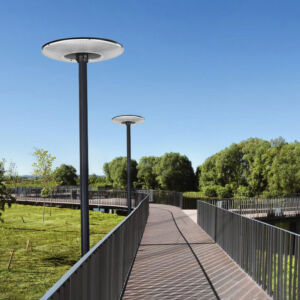Are you tired of outdated street lights that consume massive amounts of energy and fail to illuminate the road effectively? Well, we have good news for you! The advancement in integrated solar street light technology has finally arrived. This revolutionary approach to lighting up our streets is not only environmentally friendly but also cost-effective. In this blog post, we will explore how this technology has been developed and why it’s becoming increasingly popular worldwide. Get ready to power up your knowledge on the future of sustainable street lighting!

What is Integrated Solar Street Light Technology?
Integrated Solar Street Light Technology is a new type of solar street light technology that combines traditional solar panels with energy storage systems to provide continuous lighting.
This technology uses a combination of traditional solar panels and energy storage systems to provide continuous lighting. The energy storage system allows the street lights to remain operational during periods of low light or no light, which is important for areas that experience long hours of darkness or extended periods without sunlight.
Development of Integrated Solar Street Light Technology
In recent years, solar energy has been seen as a viable option for powering street lights. While traditional street lights use fossil fuels, solar power is becoming more and more prevalent as an option because it is environmentally friendly and cost-effective.
One of the main benefits of using solar power to power street lights is that it does not require any maintenance. Streetlights run on electricity and will need to be replaced or repaired if they break, but solar panels do not require any type of maintenance.
Another benefit of using solar power to power streetlights is that it is a renewable resource. Streetlights use fossil fuels, which are eventually going to run out, but solar panels can last indefinitely without needing to be replaced. This means that over time, solar power will become a more sustainable option for powering streetlights.
There are a number of different types of solar street light technology currently available on the market. Some systems use large arrays of small panels, while others use single large panels. Systems with multiple large panels are generally considered to be more efficient than systems with smaller panels since they can generate more energy overall.
Competitive Advantages of Integrated Solar Street Light Technology
Integrated solar street light technology has a number of competitive advantages that make it an attractive choice for municipal infrastructure. These include the following:
1) Integrated solar street lights require no maintenance, making them more reliable and cheaper to operate than traditional street lighting systems.
2) Integrated solar street lights are modular, which makes them easy to reconfigure to meet the needs of individual streets or neighborhoods. This makes installation faster and easier and allows for greater customization of the lighting system.
Conclusion
As the world transitions to a greener, more sustainable future, one of the key areas in which renewables can play an important role in street lighting. Integrated solar street light technology has emerged as a key player in this regard, as it allows for reduced reliance on traditional energy sources and increased visibility at night. If you want to gain benefits from this lighting revolution, purchasing products of AvsA® Niudi is a superb choice to make the first step.
